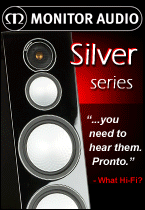
Phil Gold
Once upon a time, PS Audio developed a fine reputation for CD drive units and Digital to Analog Converters (DACs). In the nineties I owned a PS Audio Lambda drive and UltraLink DAC, which produced pretty much state of the art sound for the time. Over the years, better DACs came along but the Lambda drive was a classic and completely bullet proof - many units are still in service today.
PS Audio got its start back in the seventies, the brainchild of Paul McGowan and Stan Warren. Stan left to pursue other interest and ultimately Paul sold the company to new owners, under whose supervision PS Audio was forced into bankruptcy. Paul bought back the company for a nominal sum and made a fresh start with a brilliant conceived line of Power Conditioners. This led to a full range of cables and ultimately electronics, featuring a new amplification module, the Gain Cell. Now PS Audio has a stylish new DAC which it will follow early in 2009 with a memory based CD drive which is bound to create a lot of excitement in the audio world.
The new DAC is the Digital Link III, priced at $1349, and the styling is consistent with the rest of the current PS Audio stereo line up. We’re talking slim low profile units with a 15-inch depth, a black case and a contoured, brushed aluminum faceplate. The fit and finish is impeccable, while the controls are minimal and functional. You get a single push button on each side of the PS Audio badge. On the left you can select the input, on the right you can select the upsampling frequency. Actually, you don’t usually need to select the input - the unit works out which of the three possible inputs are active. Your input options are Optical, Coaxial and USB, while the upsampling frequencies are 96 kHz or 128 kHz. Blue LEDs indicate your current settings, and whether a signal has been locked. This all sounds simple enough, but you really have to see the unit up close to appreciate just how elegantly the controls and indicators have been laid out and what superb engineering is involved. You’ll know what I mean if you’ve used an iPod.
The USB input means the Digital Link is ready for computer audio, and you can expect to see this feature in a lot of new DACs going forward. Most of my testing involved the coaxial digital input taken from the digital output of a Meridian G08 CD player using a short length of White Label digital cable from the Australian company “The Music Cable”.
Just as you have choices on the input side, PS Audio offers you choices for the output - either a balanced output or the more common unbalanced output, in each case the sockets being of high quality construction. I used both types in my testing.
So what’s inside the box, and what makes it tick?
The heart of the beast is a Texas Instruments chip, the PCM1798DB, which made its first appearance in 2003 as a Burr Brown product. According to TI’s product description, it’s a monolithic CMOS integrated circuit that includes stereo digital-to-analog converters and support circuitry in a small 28-lead SSOP package. The data converters use TI’s advanced segment DAC architecture to achieve excellent dynamic performance and improved tolerance to clock jitter. PS Audio is not alone in selecting this chip - versions of the PCM1978 can also be found inside the Roksan Kandy CD player and the expensive SimAudio Moon SuperNova CD player.
As any engineer will tell you, it isn’t the DAC chip alone that determines the sound quality. Much depends on how the power supply is regulated and the quality of the receiver stage before the DAC chip as well as the output stage after the chip. PS Audio has done its homework on all points. They use the high performance Crystal CS8416 for its superb low jitter performance. It separates the digital signal from the clock, and passes it to a TI SRC6192 sample rate converter which, regardless of the frequency of the input signal (any PCM signal up to 24 bit 192 kHz), outputs a 96 kHz or 192 kHz 24 bit (your choice) digital stream to the DAC chip. This is not the only way to implement upsampling, and many prefer to upsample from the Redbook CD standard of 44.1 dHz to 88.2 dHz or 176.4 dHz (exactly two or four times oversampling which can be achieved quite readily) rather than convert to the 96 KHz or 192 KHz number, which requires a much more complex mathematical transformation.
Normally, the current output of the DAC chip is then converted to a voltage using one of the many available op-amps. Paul McGowan maintains this step is responsible for the harsh digital sound that has given digital audio a bad name in the past. It is a symptom of SID or Slewing Induced Distortion, a combination of feedback and transient response issues in the op-amp. His design uses discreet components which avoid any feedback and eliminate SID. The voltage signal then passes through a passive filter to remove noise, rather than the more common active filter with its associated feedback loop. In common with a number of other high-end DAC manufacturers, McGowan designs his own discreet amplification stage rather than the usual op-amp circuitry. This Class A design uses FETs at the input and bipolar transistors for the gain and output stages.
Given PS Audio’s prominence in power supply technology, you would expect them to go to town on the power supply in this DAC, and you’d be right. There’s a large toroidal transformer feeding four large capacitors, Linear Technologies regulators and high-speed low-noise diodes. Surprisingly, the output level from this DAC is a little hot - 2.75 volts for unbalanced and 5.5 volts balanced. I would have preferred to see something closer to the industry standard 2 volts unbalanced and 4 volts balanced, but this should not cause problems for most modern amplifiers. Curiously, the balanced output would otherwise be too high for my Perreaux Radiance R200i amplifier, but so are several other CD players so I’ve had it modified to accept higher input levels and the PS Audio DAC is a very good match now for both unbalanced and balanced connections.
The Digital Link comes with a fairly simple soft-cover manual. I’d like to see a bit more information in there, especially for computer audio, but there really is not much to play with on the unit anyway. Just connect it up with good quality power cords and interconnects (I used Nordost Valhalla), plug in the digital feed from your digital source and away you go. It worked the first time for me and I’m sure it will for you.
So on with the listening tests. If PS Audio set out to avoid that irritating digital edge, they have certainly achieved their aims. This DAC is a pleasure to listen to, especially at the 192 kHz upsampling rate. It’s unfailingly musical, has a warm, rich sound and images well. It is a modestly priced unit as audiophile DACs go ($1349) and there’s a lot of competition around and just above this price. Two units that set the bar here are the Grace M902 and the Benchmark DAC1USB. They both cost rather more and are designed more for professional audio applications, but they also double as headphone amplifiers, so a direct comparison of value for money is difficult. Neither can hold a candle to the PS Audio’s visual impact, but they may have a slight edge in ultimate resolution and bass slam to go with their extended function sets. The Benchmark has a rather drier sound with very high resolution and bass slam, while the Grace produces a warmer sound, similar to the PS Audio but quicker in the bass and with a little more layering of image depth. The Achilles heel of the Digital Link III is a small drop in articulation in the bass registers coupled with an image which is not as deep or focused as one could wish, but these are small quibbles at the price. A warm non-fatiguing sound is what Paul McGowan set out to achieve and he’s succeeded brilliantly.
The PS Audio DAC is least comfortable where the music has a strong bass component, where it lacks the full measure of propulsive drive that gets you up and boogying. So this may not be the unit for head-bangers. It’s not the quantity of bass energy that it delivers so much as the tight reflexes and pitch precision of the very best components. The midrange is exemplary here, and the treble is remarkably refined. Dynamics are not state of the art, nor would you expect them to be in this price range since it is very expensive to engineer the power supplies and circuit topology necessary to accurately reproduce the full dynamic range encoded in the digital bits. The image is wide and stable but lacking somewhat in depth compared to reference sources.
If you already have a top notch CD player like the Meridian G08, you will be hard pressed to improve on its performance with any external DAC. The G08′s internal circuits, which upsample to 176.4 kHz, are exceptionally fine, producing greater image depth, increased definition and a decidedly more refined bottom end than the test unit. But the latest version of the G08 (G08.2) will set you back well over $5000, and it remains untouchable at that price.
That’s not the target market for the DLIII. It’s aimed instead at those owning older or less high-end CD players, those looking for improved sound from their DVD players (very few of which have any pretensions to seriously good two-channel audio) or for those of us getting into computer based audio. If you count yourself in one of these groups, why not try the Digital Link III? You’ll be surprised just how much DACs have improved over the years, and you’ll be hard pressed to find another DAC to match it at the price. If you have no use for it today, the USB input is a bonus you may come to really appreciate over time. And thanks to some excellent industrial design, here’s a component your eyes can enjoy without even turning on.
Manufacturer:
PS Audio International
www.psaudio.com
Distributed in Canada by Dimexs, 514-333-5444
PS Audio Digital Link III DAC
Price: $1349 CDN
Click here to discuss this article on the CANADA HiFi Forum














